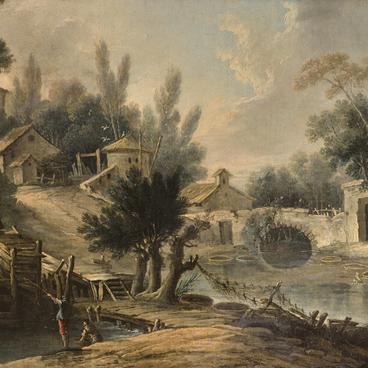The work “The Sibyl of Cumae” from the collection of the Sakha Republic National Art Museum vividly manifests the features of the Baroque style: a composition built on a diagonal, a complex perspective from above, an emotional gesture of the right hand, the use of bright colors, and clarity of details. The voluminous, convincing figure of the prophetess is depicted in close-up sitting against the cloudy background with blue patches of sky and green foliage. She is dressed in an ocher-gold dress tied under her chest and a red cape with lush rich folds that effectively emphasize her feminine figure. On her lap lies an open thick book with a Latin saying, UT NON CONFUNDAR(“That I may not be put to shame”). The expression is found in antiquity and in the Middle Ages. In a later interpretation, it refers to martyrs or to the crucified Christ, who cannot be put to shame.
In ancient times, the Sibyls were prophetesses of divine origin. The Sibyl of Cumae was the most famous of them. The city of Cumae, located on the territory of present-day Italy, was a Greek colony in ancient times. According to legend, the very first Sibyl from the temple of Apollo in Cumae received the gift of divination from Apollo himself. One legend says that Apollo fell in love with a beautiful girl who lived in Delphi, and decided to give her the most powerful gift of divination on earth if she moved to Cumae. Apollo promised her that she would see the future, prophetize for as many years as the number of grains of sand she could grab in her hand, and live as many years as she lived away from her native land. The Sybil indeed lived for more than a thousand years, but she forgot to stipulate an important condition — to always remain young and beautiful. The Sybil turned into a feeble old woman and, becoming completely decrepit, hated life and begged for eternal rest. One day Delphic merchants came to her and thanked her for her wise advice, presenting her with a gift — a bag with a handful of native soil. The prophetess untied it, and a handful of earth from distant Delphi poured into her palm. The Apollo condition was violated. Sibyl died a day later.
The work was done by an unknown Italian artist
based on the painting “The Sibyl of Cumae” by Giovanni Francesco Romanelli,
nicknamed Viterbese or Raffaellino, a Baroque painter, creator of mythological
and historical scenes.



